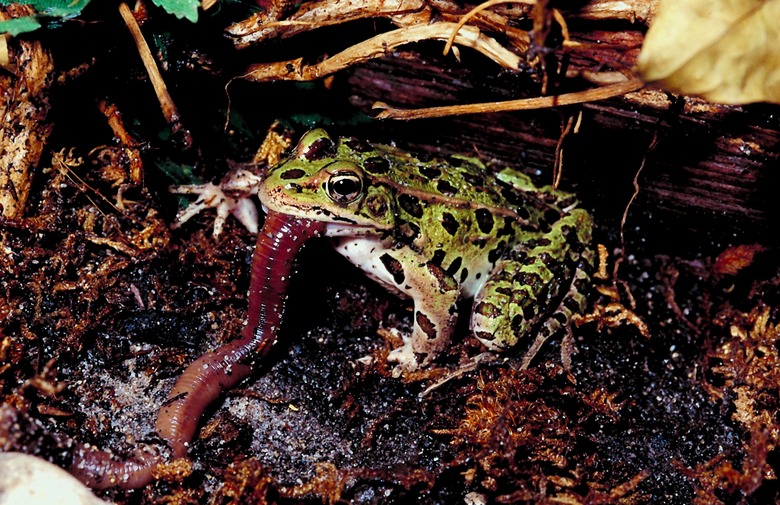Worms In The Ecosystem
You probably don't want to find one as you bite into your apple, and surely your pet pooch could do without them infesting its digestive tract, but worms are a vital part of soil ecosystems in the garden and on the farm. Earthworms, which should not be mistaken for the insect larvae found in fruit or the parasites infesting animals, have many different roles in their habitats.
Cleanup Crew
Cleanup Crew
Leaves, fruit, animal droppings and even dead animals disappear with the help of earthworms. Worms feed on this organic residue and recycle the nutrients back into the soil. These decomposing machines can consume their own weight in food every day. A typical acre of uncultivated grassy land contains more than 500,000 earthworms, and those creatures are responsible for processing several tons of soil per year.
Tunnel Diggers
Tunnel Diggers
Depending on the species, earthworms live in different parts of the soil. One group, the litter dwellers, live under fallen leaf litter at the top of the soil. Topsoil worms live in the upper few inches of soil, and subsoil worms live up to 6 feet underground or deeper. As these worms crawl through the soil feeding and escaping predators, they create tunnels and mix up the soil components. This aeration activity provides air spaces and loosens the soil for better rainwater absorption. Plant roots benefit from worm activity with easier access to air and water.
Soil Boosters
Soil Boosters
As earthworms feed, they produce waste called castings. Earthworm castings are up to five times higher in nitrogen than the surrounding undigested soil. Their casts also contain more potassium, minerals, phosphorus and microorganisms. This natural plant fertilizer promotes flowering, root development, pest resistance and overall plant health and growth.
Fish Bait
Fish Bait
Dangling on the end of a fishing hook or hanging out of a robin's mouth, worms have some obvious predators. Underground, worms are prey to insects, snakes and tunneling mammals such as mice, moles and gophers. Above ground, birds, frogs, toads and raccoons find worms in leaf litter or dig holes looking for their prey.
Exotic Pests
Exotic Pests
Despite all the benefits of earthworms in garden and agricultural settings, these creatures are not so helpful in forest ecosystems. Most native worms in North America were wiped out by glaciers more than 10,000 years ago. Forests grew without the benefit of earthworms. As settlers arrived and introduced worms from Europe and Asia, the creatures spread faster than they would naturally. Where forest floors were once covered with thick layers of decomposing matter, earthworms moved in and began speeding up the process. This rapid decomposition makes it difficult for wildflowers and tree seedlings to survive.
References
- New Mexico State University: Vermicomposting
- University of Illinois Prairie Research Institute: Illinois Earthworms — Indicators of Soil Health?
- Pennsylvania State University Extension: Earthworms
- University of Waikato: Science Learning Hub — Earthworms' Role in the Ecosystem
- County of Los Angeles Department of Public Works: Smart Gardening Information Sheet — Worm Composting
- Minnesota Department of Natural Resources: Invasive Terrestrial Animals — Earthworms
Cite This Article
MLA
Godawa, Jean. "Worms In The Ecosystem" sciencing.com, https://www.sciencing.com/worms-ecosystem-10405/. 24 April 2017.
APA
Godawa, Jean. (2017, April 24). Worms In The Ecosystem. sciencing.com. Retrieved from https://www.sciencing.com/worms-ecosystem-10405/
Chicago
Godawa, Jean. Worms In The Ecosystem last modified August 30, 2022. https://www.sciencing.com/worms-ecosystem-10405/
